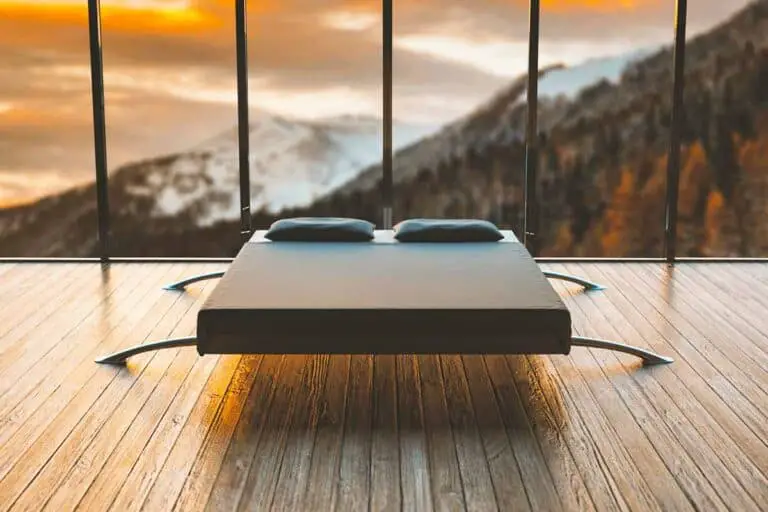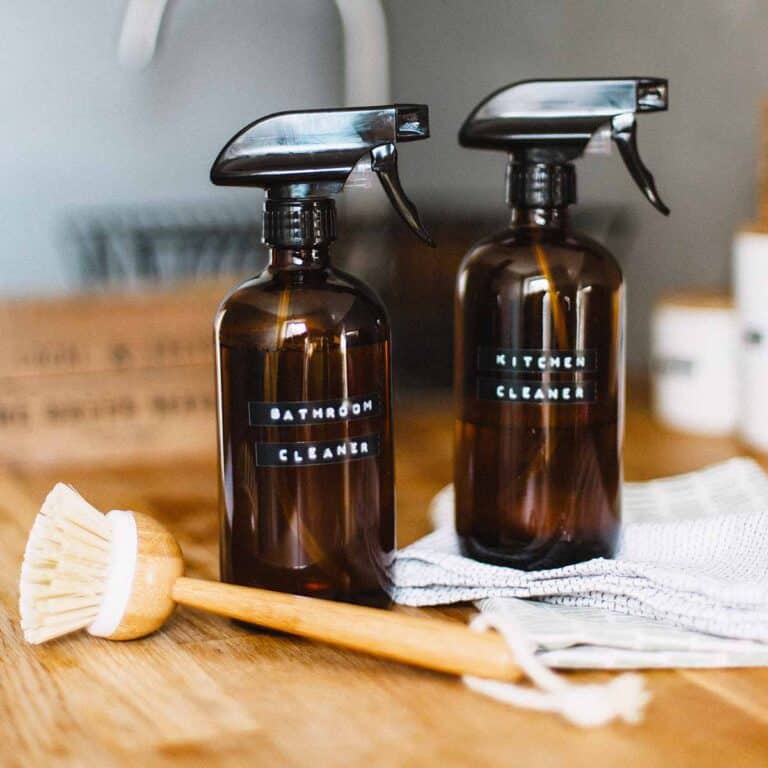15 Ways to Protect a Mattress (Complete List!)
A new mattress is a valuable investment, but not everyone thinks of it that way.
Whether you’ve just bought one or planning to buy one, it is an investment that is worth protecting – not just from the viewpoint of the initial outlay of money but also prolonging the life of the mattress so it can continue to serve you faithfully for years to come.
How to Protect Your Mattress so It Lasts Longer?
Different types of mattresses are designed by the manufacturers to last a certain number of years, taking into account general wear and tear – hence the varying length of the mattress warranty.
While not providing adequate support for the mattress can void the manufacturer’s warranty. On the other hand, giving the mattress the protection it needs can mean a longer lifespan for the mattress, often measured in years.
As such, it doesn’t matter the type of mattress you own – traditional innerspring, all-foam, gel memory foam, pillow top, or one of the newer hybrid mattresses with pocket springs, or if you are using a mattress topper on the mattress itself – protecting it should be an important priority for the health benefits the mattress provides you.
Start applying the following protective measures for your mattress so it lasts longer:
1. Place mattress on a solidly-constructed bed base
As the first and most important measure of all, ensuring your mattress is well-supported goes a long way in it surviving its design life, at the very least.
While it is essential to get the mattress a foundation, correctly pairing your type of mattress to the right bed base is equally important.
For instance, a box spring and bed frame can adequately support a traditional innerspring mattress. Newer and heavier memory foam or hybrid mattresses, however, would require a more rigid base such as a platform bed.
Why do you need a bed base?
An appropriate and solidly-constructed bed base;
- Provides the necessary support the mattress needs to maintain its form and perform its function,
- Promotes proper spinal alignment as you sleep through the night, and
- Allows moisture on the underside of the mattress, if any, to escape.
2. Avoid jumping on the bed
As much as jumping on the bed sounds like fun, the bed isn’t a trampoline and certainly isn’t designed like one.
Although the mattress is designed to carry the weight of the sleeper(s), it is particular in the way the mattress absorbs that pressure. As you get into the bed, the entire weight of your body applies pressure on the mattress in a rapid but gradual manner.
On the contrary, jumping on the mattress asserts sudden and huge pressure on it. It is also a very pointed application of force on a relatively smaller area of the mattress.
If it is a mattress that consists of some form of springs in it, those springs can break. If the springs within the mattress don’t break, the support structure of the bed base could.
So, does jumping on the bed ruin the mattress?
Yes, it certainly does!
3. Rotate or flip the mattress periodically
When you sleep, you are effectively occupying only a certain area of the mattress.
As you continue to do so week after week, month after month, the mattress and especially its internal support system, starts to get “tired” in a particular way in particular areas of the mattress.
Add to that your particular type of sleeping position – side sleeper, stomach sleeper, or back sleeper – you can imagine why the stressed areas of the mattress could use some recovery time.
Rotate the mattress head to feet once every 3 months if you are using a one-sided mattress (as most newer mattress designs are).
If you are using a double-sided mattress, you can rotate and/or flip it once within the same quarterly interval.
In a nutshell, why should you rotate your mattress?
Periodic rotations (or flipping) of the mattress confine the working load on a particular part of the mattress while allowing the rest of it to recover its form and elasticity.
4. Use a mattress protector from the outset
What is the purpose of a mattress protector?
A mattress protector, or a mattress cover, protects the mattress from accidental drink spillage, sweat, other bodily fluids, and the general dust and dirt. The primary function it performs is different from what a mattress pad or a mattress topper does.
It is a protective layer of fabric, often made from cotton, polyester, or a combination of different materials, that goes in between the mattress and the bedsheet.
Although a pad and a topper can provide some degree of protection in addition to their primary function of comfort, a protector help prevent dust particles and fluids from penetrating into the mattress more effectively.
Think of the mattress’s sole job as providing your body with comfort and support for quality sleep night after night. In order for it to continue to perform that task, it needs the protection a mattress protector affords for it to stay clean, unstained, and unsoiled.
A higher-quality waterproof mattress protector is the ideal choice. However, a less expensive protector can still buy you some time in prolonging the lifespan of your mattress.
Regardless of the type of protector you buy, provide your mattress with the protection it deserves from the outset of your mattress ownership.
5. Avoid eating and drinking in bed
Breakfast or your favorite snack in bed – doesn’t it sound nice?!
It is all good when no accident happens. But when it does (and it’s a matter of when not if), the ensuing job in cleaning the sheets and drying the mattress can be very tedious.
More importantly, regardless of how well you clean up the stain and odor afterward, a little bit of damage is caused. It is this accumulation of little damages over time that contributes to the earlier-than-expected breakdown of the mattress.
Although this is when the benefit of a mattress protector comes in, it is still best to avoid the risks altogether.
6. Keep pets out of bed
As much as we love our pets, getting them their own separate sleeping space is probably best.
Even the most well-groomed pets go outdoors and shed fur and dead skin, not to mention the occasional bedwetting.
Parasites like fleas, ticks, and lice are some of the common external organisms that could infect your pet dog or cat at some point in their life.
Situations that make it possible for these parasites to infect your bed is best avoided.
7. Change and wash bed sheets regularly
A regular changing and washing of bed linens not only protect the mattress but more importantly, they ensure that your bed is in optimal conditions for you to get your much-needed restful sleep every night.
Although they aren’t obvious unless you pay particular attention to them, dead skin cells and grime can build up quickly. Dead skin cells make the perfect buffet for dust mites.
Apart from those, sweat, drool, oils from your skin and other body fluids also add to what is now a cesspool of your own making if the sheets are left without cleaning for an extended period of time.
As such, adopting a fixed schedule is best to get the habit started and going consistently.
How frequently should you wash your bedsheets?
You should wash your bed sheets at least once every fortnightly, although once a week is the recommended frequency. Wash them using warm water and ensure sufficient washing detergent to kill bacteria and potential mold.
8. Wear breathable sleepwear
Sleepwear material affects not just how good it feels to the body, but it also determines how comfortable you sleep without sweating.
Choosing light and breathable sleepwear such as cotton pajamas, in addition to temperature control in the bedroom, would allow you to sleep uninterrupted through the night and minimize perspiration.
9. Do not go to bed dirty
At the end of each day when you return home tired from a long day at work, it can be all to easy to want to cut yourself some slack and not get yourself cleaned.
In addition to dust and dirt, there is also the accumulation of oils secreted by the skin on nearly every surface of the body. Personal comfort aside, getting rid of them before getting into bed, in a way, helps prolong the next time you need to have the sheets washed.
At the very least, wash your face before bed as it tends to be the body part that secretes the most amount of oil.
10. Vacuum the mattress
Every time you change and wash the mattress protector, take the opportunity to also vacuum the mattress and the bed foundation.
Vacuuming all sides of the mattress may not be necessary every time you vacuum the mattress, but it is good to do so when you stand the mattress against the wall for thorough cleaning.
This will allow moisture to escape from the underside of the mattress, especially if your mattress foundation is not the breathable type.
Ensure that the end of the vacuum hose or brush is clean before using it on the mattress.
11. Spot-clean stains immediately
When accidental drink spillage or overnight bedwetting happens, spot-clean the stain immediately. The longer the wait is, the tougher it is to clean the stain and rid the mattress of potential odor.
Take layers of paper towel to dab the affected area as soon as you can. Continue doing this, with new paper towels if necessary, until the surface is relatively dry.
Doing this will minimize the amount of liquid that seeps into the mattress. Thereafter, continue to the next step to clean the stain.
Mix 1-part laundry detergent and 2-part warm water in a spray bottle. Shake well, then spray evenly on the affected area.
Gently scrub the mattress with a light-colored cloth to remove the stain. When the stain is no longer visible, wash the cleaning solution off the cloth and wipe again to remove excess solution on the mattress.
Ensure that there is sufficient ventilation on the underside of the mattress for a proper and thorough drying before putting the clean mattress protector and bedsheet on.
12. Deodorize the mattress regularly
Staining due to bedwetting often means the cleanup involves more than just removing the stain.
The lingering odor may not just be an uncomfortable smell you have to deal with, but it could be a sign that there is still excess moisture within the mattress.
In order to get the odor out of the mattress, use white vinegar, and spray it on the affected area using a spray bottle.
Soak up the vinegar using as much paper towel as needed.
Thereafter, sprinkle the area with baking soda using a strainer and let it sit for a few hours. This will naturally neutralize the odor.
Vacuum the baking soda off the mattress before you put the mattress back to use.
13. Allow natural ventilation into the bedroom
Whenever the weather permits, open the windows and allow the bedroom to get some natural ventilation.
As the bedroom is effectively an enclosed space for at least 8 hours every night, a buildup of humidity is unavoidable. This can adversely affect the bedding and mattress and is the main culprit in mold growth on mattresses.
Letting the windows open for a few hours a day can go a long way to ensure your mattress stays dry and prevent the much-dreaded mold growth.
14. Put the mattress out in the sun (harness the power of the sun)
Whether there is dampness in the mattress, or if it smells awkward, take the mattress outside in a sunny spot to let it air out and dry.
Even if there is no apparent problem with the mattress, letting it get some sun, perhaps once a year, is a good preventive measure to avoid any buildup of odor or moisture in it.
After all, the sun is a very good disinfector and natural deodorizer.
15. Protect the mattress when moving
Moving to a new home may not always mean getting a new mattress especially if the mattress is still in good condition.
The best way to ensure the mattress protected when moving is to seal it in a heavy-duty mattress bag.
All-foam mattresses, including memory foam mattresses and mattress toppers, can typically be compressed to minimize the size when moving space is a premium.
Other mattresses containing some form of springs design, unfortunately, would have to be transported without compressing, rolling, or folding.
In both cases, protection is a necessity to avoid damage.
Other FAQs
How to Protect a Mattress While in Storage?
You have a new mattress and the old one it replaces needs to go somewhere. It is still in good conditions and you do not wish to discard it just yet. You probably paid a few hundred dollars for it and it feels like a waste of money to throw it out now.
Regardless of the reason you want to put the mattress into storage, proper protection is a necessity if you ever want to re-use it in the future.
In order to properly protect a mattress while in storage, you need to do the following:
- Use a mattress cover to fully encase the mattress.
- Place the mattress in a heavy-duty mattress bag and seal it.
- Ensure that the storage room is dry.
- Lay the mattress flat in storage. Only stand the mattress on its side when you absolutely have no space to lay it flat.
- Do not stack other items on top of the mattress.
How to Protect Your Mattress from Bed Bugs?
The general methods used to protect a mattress may not be sufficient to protect it from bed bugs.
Protecting your mattress from bed bugs involves:
- Using a mattress cover to fully encase the mattress.
- Cleaning the bedsheets regularly.
- Reducing clutter in your bedroom to minimize hiding places for bed bugs.
- Keeping the bedroom ventilated as much as possible.
- Not letting your pet sleep in the same bed as you.
How to Protect a Mattress from Bedwetting?
Bedwetting is a problem that can make the mattress conditions deteriorate quickly due to the constant presence of moisture in it.
In order to effectively protect a mattress from bedwetting, use a waterproof mattress protector. If frequent bedwetting is an issue, use an additional layer of a mattress pad on top of the protector to help absorb the urine.
How Often Do You Need to Wash a Mattress Protector?
Your mattress needs protection and so should the mattress protector that is protecting it. Regularly washing is the best form of maintenance of the protector.
You should aim to wash the mattress protector once every 2 to 3 times you wash your bedsheets, or whenever conditions warrant. At the very least, change and wash the protector once every 3 months.
How to Protect a Mattress on the Floor?
Putting a mattress directly on the floor is not a good idea, to start with.
The drawbacks of the mattress on the floor include higher exposure to dust particles and dust mites, restricting airflow under the mattress thus causing moisture buildup in the mattress. These ultimately lead to mold growth and possibly infestations that would completely ruin the mattress. There are no two ways about it – the mattress needs to stay elevated from the floor on some form of foundation.
How to protect your mattress from sweat?
The cause of perspiration during sleep can be multifactorial – ambient temperature, sleepwear material, mattress type, and health conditions.
The combination of the following ways helps to protect your mattress from sweat:
- Use a mattress protector to cover the mattress
- Wear light and breathable sleepwear
- Utilize temperature control for the bedroom






